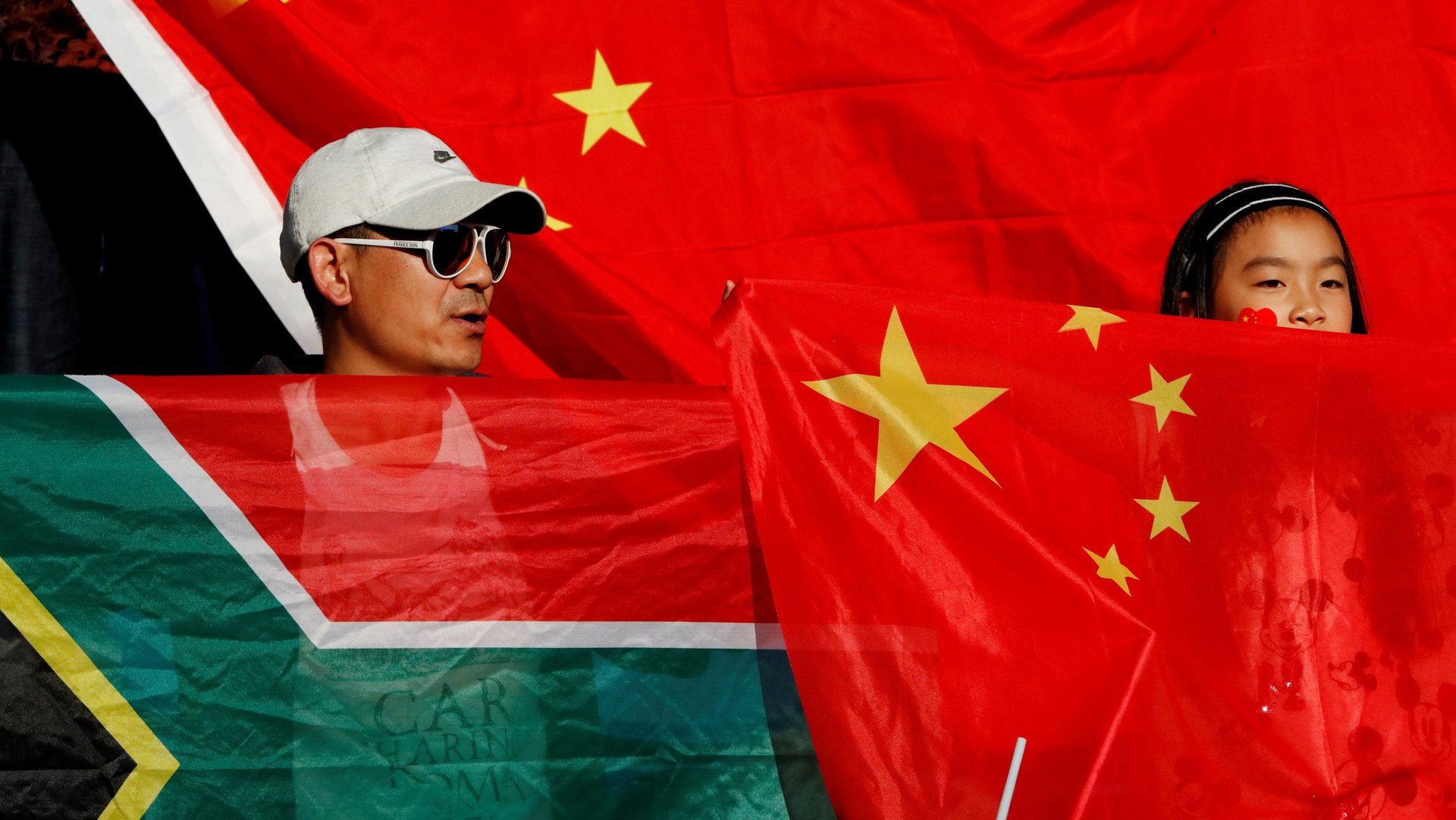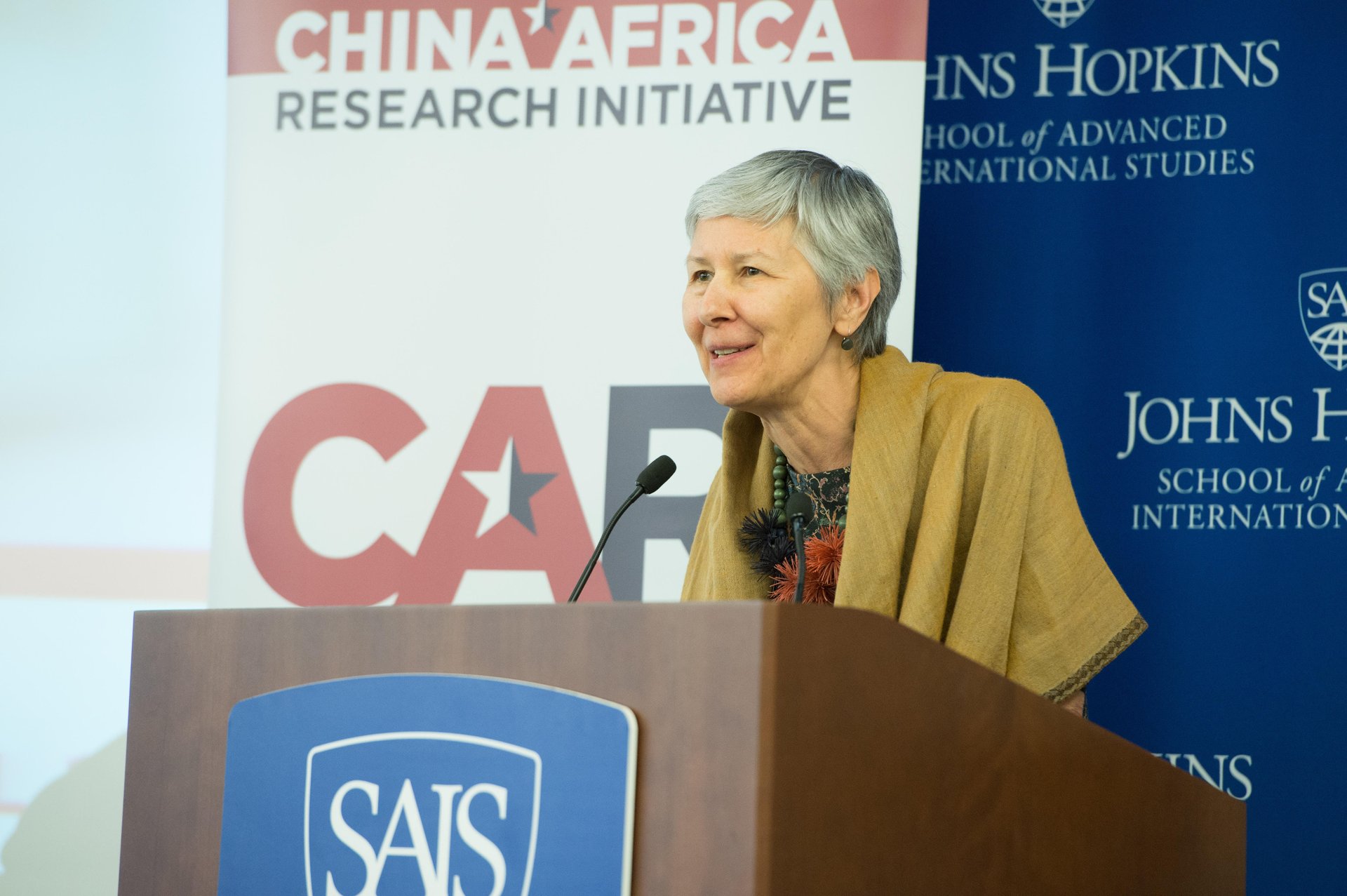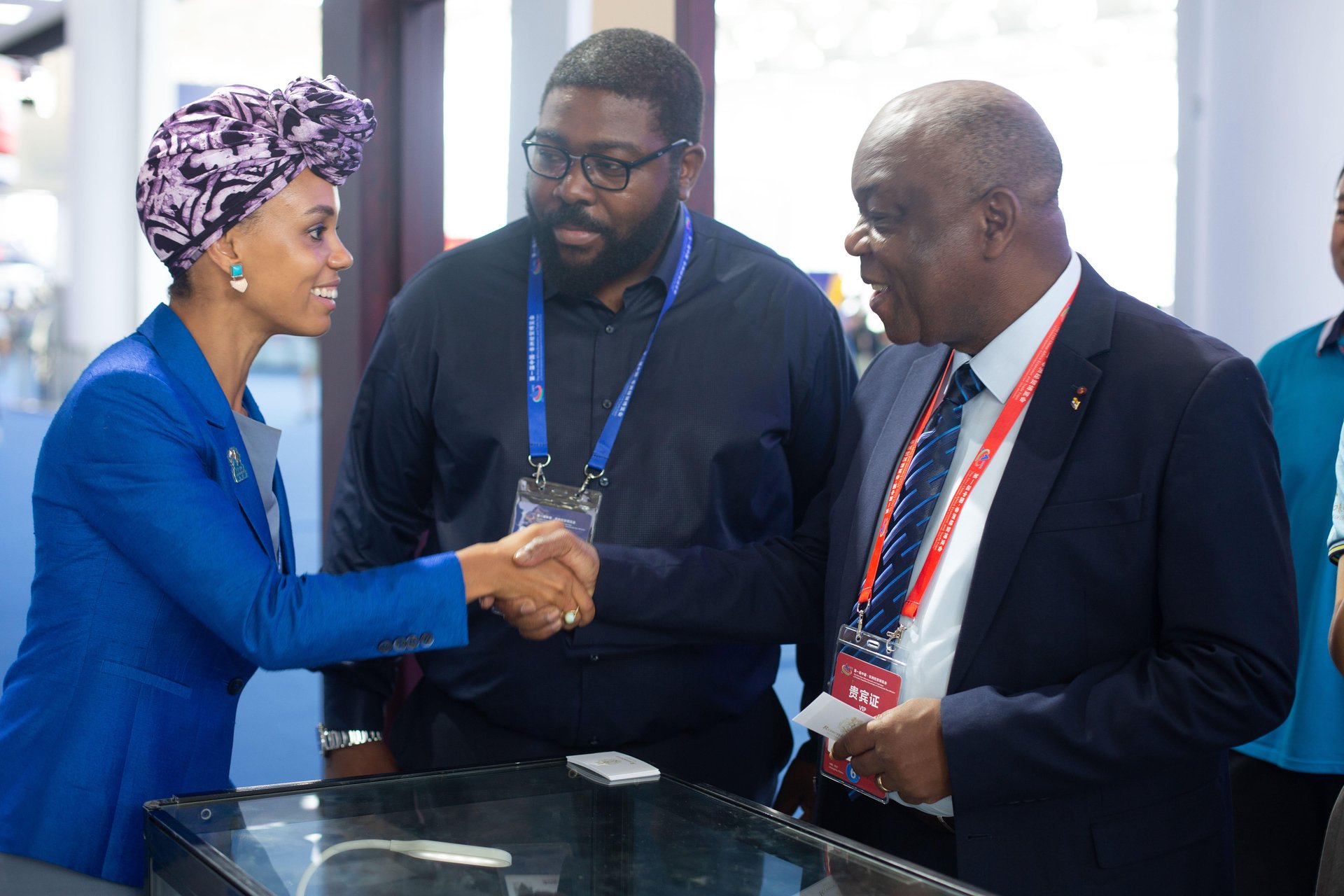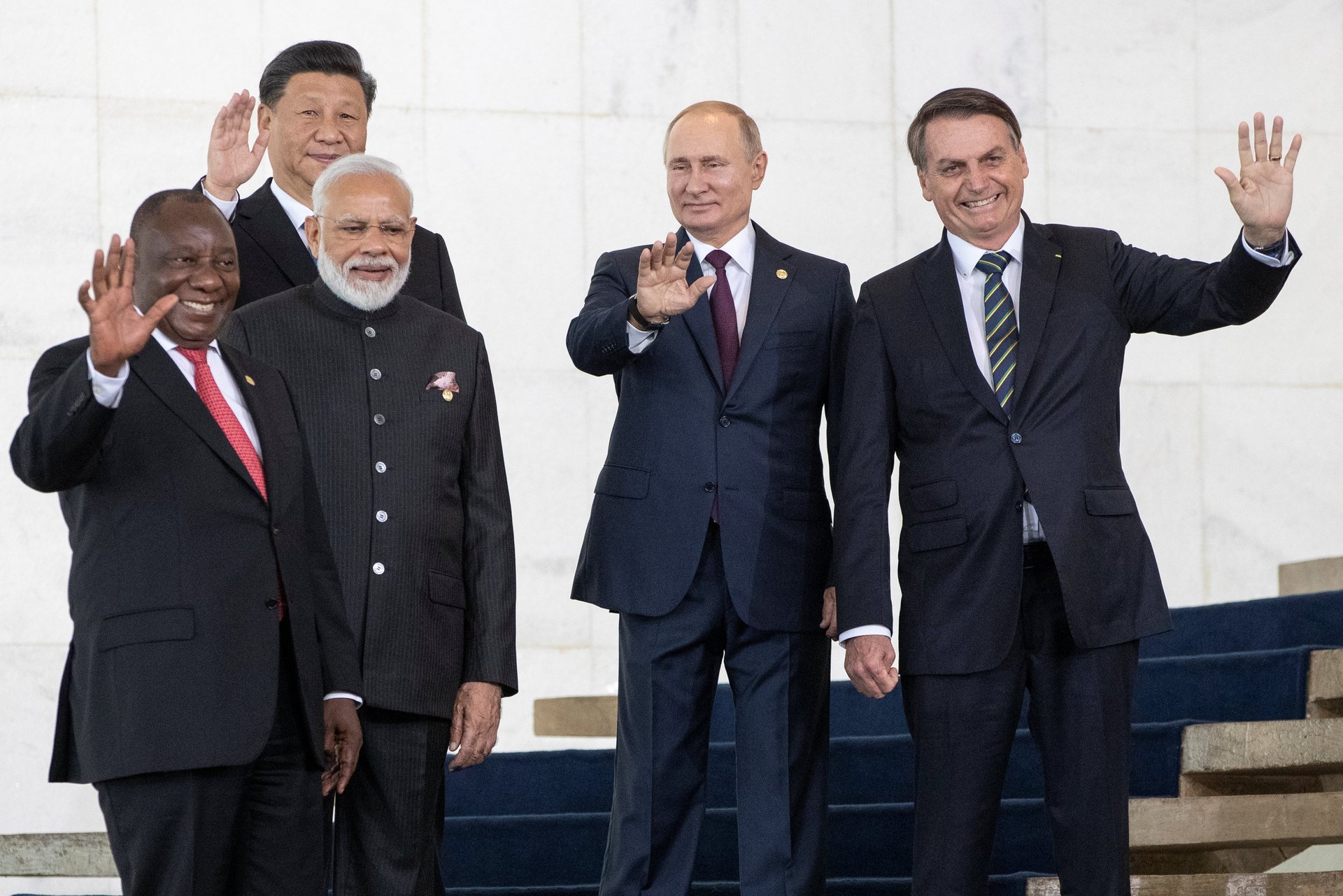Two China-Africa experts on the stereotypes they’re surprised to still be unpacking
From charges of neo-colonialism to debt and vaccine diplomacy, China-Africa experts face dual responsibilities. Not only do they need to tell the real story of China’s engagement in Africa, they also need to break down and challenge the cynicism surrounding the topic, in order to encourage better and more sustainable engagement.


From charges of neo-colonialism to debt and vaccine diplomacy, China-Africa experts face dual responsibilities. Not only do they need to tell the real story of China’s engagement in Africa, they also need to break down and challenge the cynicism surrounding the topic, in order to encourage better and more sustainable engagement.
Author and professor Deborah Bräutigam is one of these experts. In 2014, she created the China-Africa Research Initiative (CARI) at Johns Hopkins University’s School of Advanced International Studies to gather credible sources of data that can be used to better understand China’s engagement in Africa.
Hannah Wanjie Ryder is CEO of Development Reimagined, an independent, African-led international development consultancy based in Beijing, which recently celebrated three years of advising African governments, international organizations and others on how to improve the Africa-China relationship. In recent months, she has led a series of webinars on how to reimagine African financing, in partnership with Quartz Africa, which can be viewed here.
Ryder and Bräutigam recently discussed their work, the tropes they have to repeatedly address, and what they see as the next stage in China-Africa relations. This conversation has been edited and condensed.
Ryder: Your award-winning 2009 book Dragons Gift: The real story of China in Africa, illustrated how people were viewing China’s role in Africa, notably its environmental impact, as very black and white, bad or good. The book was packed with incredible data as well as anecdotes indicating a lot more “gray.”
Bräutigam: People think that China’s footprint in Africa is very recent and malevolent, but my interest in China in Africa started back in the 1980s, when I visited several projects that China had been funding. Back then they were admittedly smaller, but there was a great deal of positive fanfare around them. However, few researchers saw what happened after their completion.
Many sites I visited had problems because often the attention was shifted to new projects. On the other hand, by the time I was writing the Dragon’s Gift, there was also a lot of misunderstanding I wanted to correct. For example, what are often termed the “Angola model” type loans didn’t start in Angola, but started instead in Sudan in the 1990s. The loans for building up Sudan’s oil industry were Chinese and oil-secured.

I recall visiting Ethiopia in 2011, and the international narrative at the time was of how Chinese workers were everywhere in Africa. One morning I was reading the local newspapers and saw a government press release on the front page setting out a “five-year schedule” to decrease the number of Chinese workers on major infrastructure projects. It was one of the first examples which piqued my interest in these nuances as well. Do you feel your job explaining the real story is done?
I wish I could say yes but sadly no. These days I feel like every six months or so some new story or narrative appears—some of which even examined in The Dragons Gift and for which, if you look at our China Africa Research Initiative (CARI) databas, you’d see cannot possibly be true, but they still need to be explained again, objectively.
Take the issue of debt. The new narrative is that Africa has a Chinese debt problem. But there are just seven countries in Africa where Chinese debt represents over 20% of external debt: Angola, Djibouti, Ethiopia, Kenya, the Republic of the Congo, Cameroon, and Zambia. And it represents this amount for different reasons in each and every country.
For instance, in Djibouti, the problem is that it’s a small economy, and their projects have been expensive. In Ethiopia, the problem is that their foreign exchange rates have not kept up and they need foreign exchange to pay for external debt. Their economy was growing when they were negotiating their big rail project to Djibouti, but it’s slowing down now. In Cameroon, the Republic of Congo and Angola, the problem is the fall in oil prices since 2014. Chinese lending peaked in 2013 when commodity prices were high.
I find it surprising that I still have to write and talk about these issues, but I do. As do you!
There is so much to do to help understand the degree and potential for African agency in the China relationship. What is your assessment of how strong African countries are, for example when it comes to taking loans from China? Are African countries risking too much?
Any loan is a risk for both parties, just like any investment. People like to refer to certain African markets as risky, “frontier” markets. But this is very subjective. Mauritius for example, was seen as very stable but was hit hard by an oil spill and Covid-19 in 2020. And what country isn’t risky? Look at the US.
In any loan contract there have to be things that protect both parties. Agreements with the Exim Bank of China have a lot of boilerplate language that looks like it comes from international law firms, unlike World Bank contracts which are simpler and shorter. The waiver of sovereign immunity for example, probably wouldn’t be included in a World Bank agreement. We can see that German state-owned bank agreements do include this because they have experience of suing African countries. The risk for the borrowers is more how the contracts are allocated and not so much in the loan itself.
As for what happens if the countries don’t repay loans, in the African context, my assessment is that risks seem to be more on the Chinese side because they have little leverage. It goes back to what you refer to as whether the relationships are deep enough. Right now few African countries are heavily dependent on China. It’s the Chinese lenders that have to be flexible, in cases I’ve seen so far.
Yes, I would also add that Africa makes up a very small part of overall Chinese lending. China also seems to have a lending relationship with more African countries than other bilateral donors and even multilaterals. For instance, the World Bank doesn’t lend to Zimbabwe, but China does. And China seems to be willing to take on quite creative contracts—like the “Angola model” you mentioned earlier where loan payments are taken directly from an account in China, and built up with commodity sales to China. Why is this?

It’s a combination of both African and Chinese creativity, also based on China’s own experience. When China started borrowing internationally, the country was seen as very high risk, and didn’t have much collateral either, so it used these kinds of natural resource-backed loan arrangements with its own lenders. So, China has been open to doing that for others, from Sudan to Angola to Ghana. In loans from the 1990s, 25% of exports from Zimbabwe to China went into what’s known as an “escrow” account, so that it is ring fenced for loan repayment.
It’s an interesting model because it is a way to bring down the risks. If something is secured with oil or with any other commodity, it doesn’t need to be insured (NB: in China the insurer is called Sinosure). For Chinese banks this kind of security is much better than even a sovereign guarantee.
But with commodity prices falling, it’s not risk-free for either party. That said, every agreement I’ve seen in Africa is quantity-based and not price-based. Usually every six months, the price will change, but the amount may not, so there can be a buffer for African countries if prices do fall, although it’s time-limited, of course. The goal is to have enough money in the escrow accounts holding these revenues to cover loan payments.
That said, the risk for African countries isn’t the key reason the global financial institutions or other bilateral lenders don’t like these arrangements. They don’t like them because the Chinese then become the first creditor to be paid. Most of these countries have agreed (by becoming members) that the IMF and the World Bank will be paid first. This is the “negative pledge clause” that figures in World Bank and IMF loans, and which I wrote about in The Dragon’s Gift.
What many people—even other donors and multilaterals—often forget when it comes to taking loans to build infrastructure in particular is that governments are trying to pay for “public goods” that the private sector wouldn’t build on their own because it’s too expensive upfront, or you can’t exclude other private sector actors from using it once it’s built. Streetlights are the usual example we use, but rail, roads, even energy to some degree, all fall into this category.
Indeed. Take the Kenya Standard Gauge Railway. That was a very well-thought-out arrangement for a project where the revenue was going to take a while to kick in for repayment, if at all. A lot of analysis of this project and many others have this “structural adjustment” era expectation from the 1990s that infrastructure should have to pay for itself.
But aside from the fundamental economic principle, in practice this idea does not hold anywhere else in the world. For example, the US subsidizes Amtrak, the UK subsidizes their own rail network too. Added to that, infrastructure needs to be maintained. That’s an additional government cost.
So it’s difficult to analyze whether projects like these are actually failures or not. The bottom line is the infrastructure needs to be created. The real question is whether or not the whole loan structure takes this into account appropriately, and that’s where I think there’s a lot more to be done.

One of the areas of weakness I believe the Chinese lending model has is still this engineering mentality… That is – it’s “feasible” if it can be done technically. The economic modeling is significantly weaker. My team and I constantly look at Chinese contracts – many of which are available, even if hard to find. We do see that international law firms are now used a lot more for drafting loan contracts, but the ability to analyze the feasibility in terms of the economic modeling does not seem to be very strong on the borrower side. Also, Chinese contractors—like everyone—typically underestimate the cost and overestimate the benefit that projects are going to bring.
It goes back to the borrower and ultimately many of these decisions are being made for political reasons, as is often the case for infrastructure projects. And sometimes borrowers just want to provide free infrastructure. For instance, it’s rare to pay a toll to go over a bridge in African countries. Sometimes there is even a subsidized ferry crossing. But in China and the US, there are examples of toll systems. In the US, historically, these tended to be expensive, whilst in China they are fairly affordable. African countries – and Chinese lenders – can bring in more sophisticated approaches.
What do you think should be the key focus for African governments in their future engagement with China?
There are two areas that, if taken together, could help a lot. First, passing legislation or complying with legislation that provides domestic accountability and oversight on lending. By this I mean things like independent debt management offices or giving parliaments the right to sign off on central government borrowing or anything that has a government guarantee. Nigeria has got a significantly more stable position on its debt financing overall and I think part of that is because of these mechanisms.
Second, I do think African countries should have a prerequisite that every public project should have competitive bidding. And if they can’t get a competitive bid it doesn’t happen. This would ensure value for money for citizens and not over-stretching.
Can Chinese lenders do better?
I think the issue of how China deals with countries that have multiple lenders such as the private sector from China and elsewhere is going to get trickier. There is no central coordination if things go wrong for a country, and the Paris Club doesn’t cover this. We need a mechanism for creditors and debtors to come together with some interlocutors. That’s what I would put focus on going forwards.